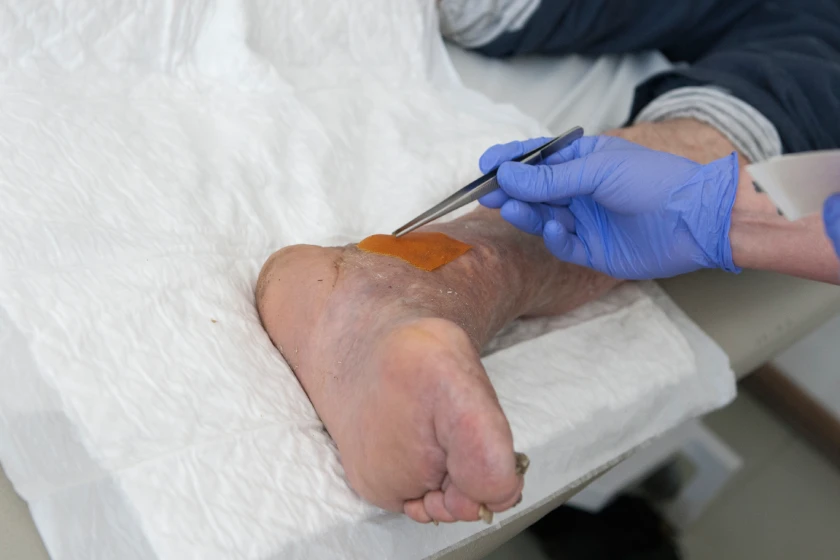
Leg ulcers are one of the most common yet challenging conditions I see in my practice as a vascular surgeon. These wounds, often caused by poor circulation, diabetes, or venous disease, can be slow to heal and extremely painful if not managed properly. Unfortunately, many patients unknowingly make mistakes while attempting home remedies or delaying professional care, which only worsens the situation.
In this article, I will explain what leg ulcers are, their common causes and symptoms, and the top five mistakes people make when treating them. By avoiding these errors and seeking timely guidance from leg ulcer specialists or a dedicated leg ulcer center, patients can experience faster healing and avoid complications.
What is Leg Ulcers?
A leg ulcer is an open sore or wound on the leg that fails to heal within a few weeks. Unlike minor cuts, leg ulcers are usually a sign of an underlying medical issue.
Common leg ulcers causes include:
- Poor blood circulation (venous insufficiency)
- Peripheral arterial disease
- Diabetes-related complications
- Infections
- Injuries that do not heal properly
Leg ulcers symptoms may include:
- Persistent open wounds on the lower leg or ankle
- Swelling, redness, or warmth around the area
- Pain, heaviness, or discomfort in the leg
- Fluid discharge or pus in advanced cases
- Thickened or discolored skin around the ulcer
There are also different leg ulcer types, such as venous ulcers, arterial ulcers, and diabetic ulcers, each requiring specific treatments. Understanding the cause and type of ulcer is the first step toward successful recovery.
Top 5 Mistakes People Make When Treating Leg Ulcers
Not Cleaning the Ulcer Properly
One of the most common leg ulcer treatment mistakes is poor wound hygiene. Some patients neglect regular cleaning, while others use harsh chemicals or unclean materials that irritate the skin. Proper cleaning with mild saline solution or as advised by a doctor helps prevent infection and promotes healing.
Ignoring the Cause of the Ulcer
A leg ulcer is not just a skin problem; it is usually a symptom of deeper health issues like vein disease or diabetes. Simply applying ointments without addressing the underlying leg ulcers means the ulcer will return or worsen. Identifying and treating the root problem is essential for long-term healing.
Using the Wrong Bandages or Dressings
The dressing used for a leg ulcer can make a big difference. Patients often use cotton, plastic coverings, or even household cloth, which can trap moisture, invite bacteria, and delay recovery. Modern medical dressings designed for ulcers maintain the right balance of moisture and protection. Consulting leg ulcer specialists ensures that the correct bandage is chosen for your ulcer type.
Not Elevating the Leg Enough
Poor circulation is one of the main reasons ulcers fail to heal. Patients often forget the importance of elevating the leg above heart level, which reduces swelling and improves blood flow. Regular leg elevation, along with compression therapy when recommended, is a simple yet powerful tool in leg ulcer treatment.
Delaying Professional Medical Help
Perhaps the most harmful mistake is waiting too long before visiting a doctor. Many patients try home remedies or over-the-counter creams for months, while the ulcer only worsens. Delayed treatment increases the risk of severe infection, tissue damage, and even the possibility of requiring surgery. Consulting a leg ulcer center early ensures that you receive the right care at the right time.
Conclusion
Leg ulcers are not just skin wounds; they are signs of deeper medical problems that require expert attention. Avoiding these five common mistakes—improper cleaning, ignoring the cause, using the wrong dressings, neglecting elevation, and delaying medical help—can make a significant difference in your healing journey.
If you or your loved ones are struggling with a leg ulcer, it is crucial to seek advice from a leg ulcer doctor or visit a specialized leg ulcer center. With modern treatments, advanced dressings, and support from experienced leg ulcer specialists, recovery is possible, and the chances of recurrence can be greatly reduced.
Frequently Asked Questions
Clean the ulcer with a sterile saline solution or as directed by your doctor. Avoid using harsh antiseptics unless specifically advised.
The best dressing depends on the ulcer type. Hydrocolloid, foam, or compression dressings are commonly used, but only a specialist can recommend the most effective option for your condition.
Elevating your leg, using compression stockings if recommended, staying active, and managing underlying conditions like diabetes or vein disease all improve circulation.
If the ulcer does not heal within two weeks, becomes painful, shows signs of infection (such as pus, redness, or swelling), or if you have underlying conditions like diabetes or vascular disease, see a doctor immediately.
Yes, but with caution. Light walking and movement can help circulation, but avoid standing or sitting for long periods without elevating your legs. Always follow your doctor’s advice on activity levels.

Dr. Sumit Kapadia
MBBS, MS, MRCS, DNB-Fellow



